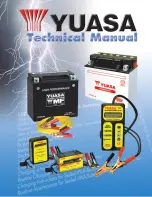
significantly under-inflated tire causes the tire to over-
heat and can lead to tire failure. Under-inflation also
reduces fuel efficiency and tire tread life, and may affect
the vehicle’s handling and stopping ability.
Please note that the TPMS is not a substitute for proper
tire maintenance, and it is the driver’s responsibility to
maintain correct tire pressure, even if under-inflation has
not reached the level to trigger illumination of the TPMS
low tire pressure telltale.
Your vehicle has also been equipped with a TPMS
malfunction indicator to indicate when the system is not
operating properly. The TPMS malfunction indicator is
combined with the low tire pressure telltale. When the
system detects a malfunction, the telltale will flash for
approximately one minute and then remain continuously
illuminated. This sequence will continue upon subse-
quent vehicle start-ups as long as the malfunction exists.
When the malfunction indicator is illuminated, the sys-
tem may not be able to detect or signal low tire pressure
as intended. TPMS malfunctions may occur for a variety
of reasons, including the installation of replacement or
alternate tires or wheels on the vehicle that prevent the
TPMS from functioning properly. Always check the
TPMS malfunction telltale light after replacing one or
more tires or wheels on your vehicle to ensure that the
replacement or alternate tires and wheels allow the TPMS
to continue to function properly.
190
UNDERSTANDING YOUR INSTRUMENT PANEL
Summary of Contents for 2010 Journey
Page 2: ......
Page 5: ...1 INTRODUCTION 5...
Page 8: ......
Page 174: ......
Page 180: ...INSTRUMENT CLUSTER 180 UNDERSTANDING YOUR INSTRUMENT PANEL...
Page 290: ......
Page 332: ...332 STARTING AND OPERATING...
Page 386: ...Jack Engagement Locations 386 WHAT TO DO IN EMERGENCIES...
Page 470: ......
Page 481: ...INDEX 10...
















































